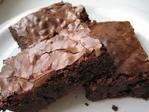Sugar choices range from white sugar, to cane sugar, to a rich brown sugar. Each variety offers a special uniqueness and application. Sugar of course provides sweetness but, it also can be used to add texture, and decoration. Sugar also makes the dough tender and provides stability for egg whites when making a meringue. It also helps your baked goods achieve that perfect golden brown color in the oven.
TYPES OF SUGARS
Highly Processed Sugars
1. Granulated Sugar: This is the most common sugar which is white in color and highly refined. It's made from sugarcane and sugar beets.
2. Caster Sugar: This is just superfine granulated white sugar. It's sometimes labeled superfine sugar. You may choose to use this type of sugar if you need the sugar to dissolve quickly, like for making meringues, and syrups.
3. Confectioners Sugar: Another name for confectioners sugar is powdered sugar. It's just white sugar that has been ground into a fine powder. To prevent clumping a small amount of cornstarch is typically blended into the sugar when processing. The best application for this type of sugar is for making icings as well as decorating your baked goods.
4. Pearl Sugar: Another name for pearl sugar is nib or hail sugar. It's a white sugar that has a large irregular coarse shape, hard texture and an opaque color. The advantages to using it are, it holds it's shape when baked. Pearl sugar is commonly used in Scandinavian baking to decorate pastries, cookies, and buns.
Minimally Processed Sugars
1. Sucanat Sugar: Made from crystallized pure cane sugar, this truly unrefined sugar retains a higher proportion of molasses than other types of cane sugars. It has an intense, rather burnt taste that may be overpowering in lighter baking recipes but, is fantastic in things like spice cakes and ginger cookies.
2. Demerara Sugar This is a variety of raw cane sugar that is minimally refined. It has large uniform grains with an amber color and a natural, subtle toffee flavor. The larger grains are similar to Sanding Sugar but it's not as processed and is amber in color.
4. Muscovado Sugar: Another name often used is Barbados sugar. This sugar does not have the molasses removed which gives it a stronger molasses flavor compared to dark brown sugar. The consistency of muscovado sugar is very similar to brown sugar, wet, and sandy. It's this rich strong flavor that works well in barbecue sauce, marinades and savory dishes.
Sources:
https://www.reference.com
www.thekitchen.com
www.mybakingaddiction.com

 RSS Feed
RSS Feed
